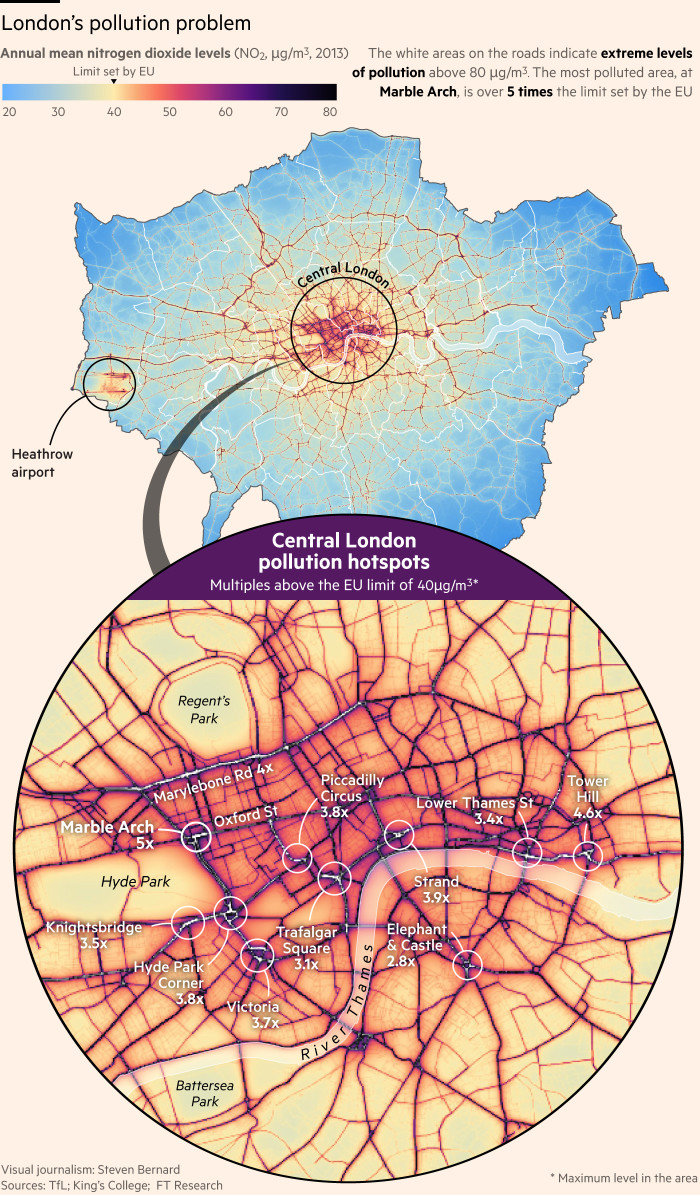More than half of the world's population live in cities. With urban population predicted to grow, and the threat of climate change expected to worsen, we must take the initiative to make better use of renewable energy and transform our cities to become cleaner, greener and more economically viable.
What Is A Green City?
They are cities which have chosen to focus on sustainability. They are cities aiming to decrease their pollution and to reduce the negative environmental impact they create. They do this by recycling, reducing emissions and waste, and more.
Why The Need For Green Cities?
Most major cities in the UK are over-reliant on fossil fuels, which has led to an inevitable increase in air pollution. According to the Financial Times, London has been over the legal limit of NO2 levels since 2010. The legal limit for NO2 set by the EU is 40 µg/m3, but places like Marble Arch in Central London is 5 times over the limit.
Many studies have reported that air pollution is linked to a range of chronic illnesses. King's College London has reported that air pollution has led to more than 9,500 premature deaths each year.
It is for these reasons why we want to look at making our cities more greener in the future. To see how we can develop these cities, we are going to look at three key areas:
- Renewable energy infrastructure
- Use of electric vehicles
- Construct green buildings
Renewable Energy Infrastructure
The alternative to using fossil fuels to power our homes, factories and businesses, is to make use of renewable energy like wind turbines, hydroelectricity and solar power. Renewable energy emits almost zero emissions and provides cheaper energy to consumers. The only setback with renewable energy sources is that they do carry a high capital cost for initial development.
In a recent article in the Guardian, the London Mayor, Sadiq Khan, and New York Mayor, Bill de Blasio, has called for major cities to divest their assets away from fossil fuels and place them into renewables.
The UK currently leads the world in offshore wind energy. In the previous year, the UK has accounted for more than half of the new offshore wind farms in the whole of Europe.
Related Learning: Level 1 in Health and Safety in Construction | CSCS Labourer Course
Use of Electric Vehicles
Diesel powered vehicles are the main culprits of air pollution in our major cities. If we take a look at the pollution map of London below, we can see that our roads are producing high levels of pollution.

Image source: Financial Times
The alternative to conventional fossil fuel cars is to use electric vehicles. Car makers like Tesla, Nissan, and BMW, have all manufactured electric vehicles for the public to buy. But the reason why we haven't seen a massive influx of electric vehicles on our roads is down to lack of infrastructure.
In response, the UK government has allocated £400 million into an initiative known as the “Charging Infrastructure Investment Fund”. At this time of writing, the Government has opened up bidding for the management of these funds, marking a major milestone in the future rollout of electric vehicles throughout the UK. The funds will allow businesses to access the finances they need to build more charge points, which will encourage the general public to the make the switch to electric cars.
Related Learning: Site Supervisor Safety Training Scheme (SSSTS)
Construct Green Buildings
According to IRJET (International Research Journal of Engineering and Technology), a green building, also known as a sustainable building, is a "structure that is designed, built, renovated, operated, or reused in an ecological and resource-efficient manner.”
The development of green buildings involves looking at the process of constructing a building as a whole, and find new and innovative ways of making effective use of building materials, resources and energy. It also looks at how we can minimise the environmental impact of a construction project whilst reducing waste and harmful emissions.
Conclusion
If we follow the above points, major cities around the world will be on the road towards a more greener and healthier city. We can join the likes of Amsterdam, Copenhagen, San Francisco and Stockholm - all these cities have been ranked as the greenest cities in the world.
For a green city that is a little closer to home, we have Bristol. Bristol was announced as Europe's greenest city in 2015. Its number of cyclist has nearly doubled over the recent years, and the Bristol Climate Protection and Sustainable Energy Strategy scheme is proof of their dedicated commitment to combating climate change.
Thanks for reading. What are your thoughts on climate change? Please let us know in the comments section below.
Featured image: Pexels



 Student Login
Student Login My Account
My Account